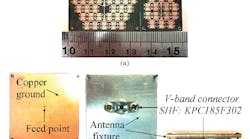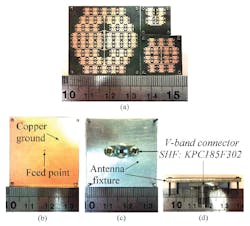As people become more connected with portable electronic devices (PEDs), researchers are exploring diverse methods of interfacing between other devices and the ever-present smartphone. Meanwhile, mobile platforms have received a huge boost in computational capability and can now implement complex algorithm processing and control. To take advantage of these smartphone features, by Gregory H. Huff, Jean-François Chamberland, and Jeffery S. Jensen from Texas A&M University explored a tethered link between a phased array and an Android smartphone. Their work relied on a cognitive motion-dynamic approach.
To explore the interaction between man and machine while cognitively monitoring activities and triggering local/remote events using device user data, significant information needs to be shared between the smartphone, network, and antenna array. With the goal of sending health-monitoring data, state information, and control signals, the phased array is controlled by the processors within the smartphone. The smartphone is used as the communications bridge between the remote network and the phased array. Wireless services like WiFi, Bluetooth, and near-field communications (NFC) can be used to coordinate the information shared between the array and smartphone to accommodate various system architectures.
The fully assembled prototype system consists of a smartphone, control board, master microcontroller unit (MCU), slave MCUs, power divider, and phase shifter. In implementation, the system was capable of directional beam steering within a 90-deg. scan volume with and error factor below 2% using the smartphone as a controller. This tethering model could provide justification for exploring smart-PED cognitive control with wireless interfaces for enhancing next-generation communication networks. See “Cognitive Motion-Dynamic Tethering of a Phased Array to an Android Smartphone,” IEEE Transaction On Antennas and Propagation, March 2014, p. 1093.
This file type includes high resolution graphics and schematics when applicable.


